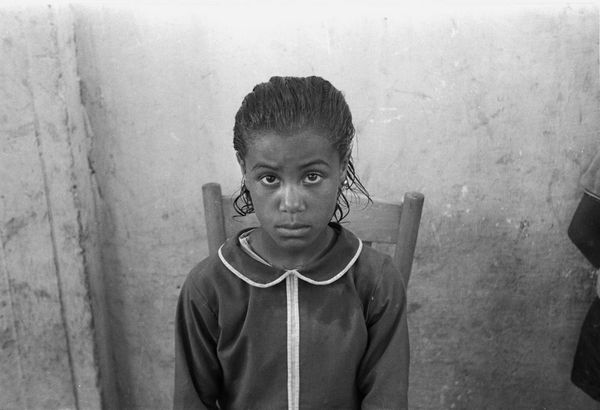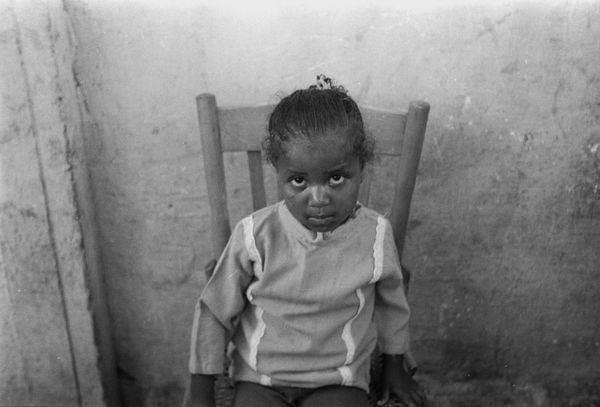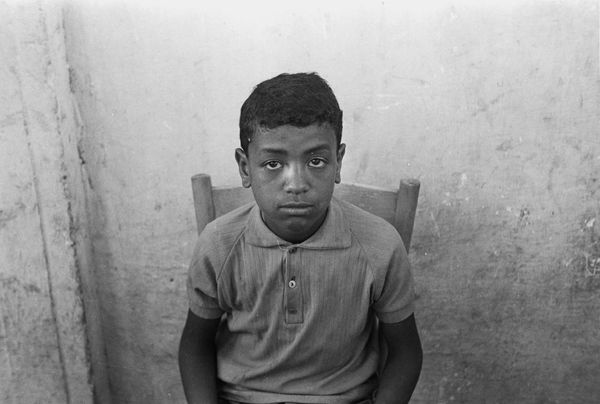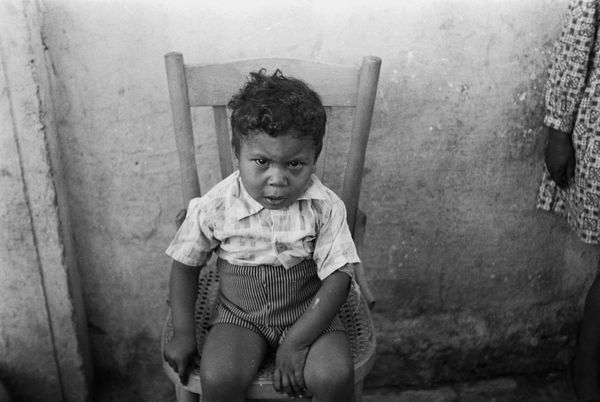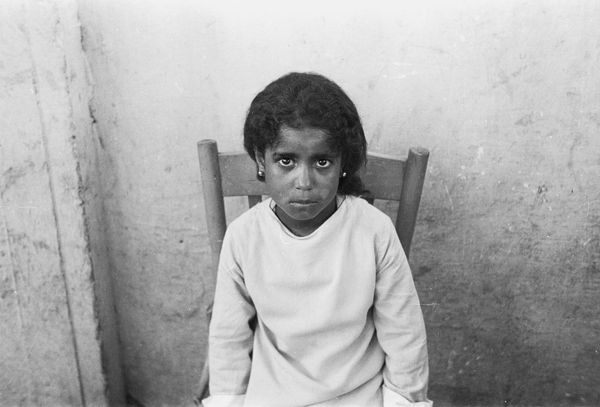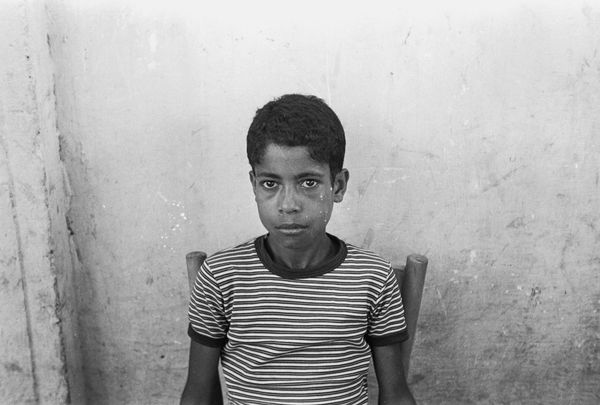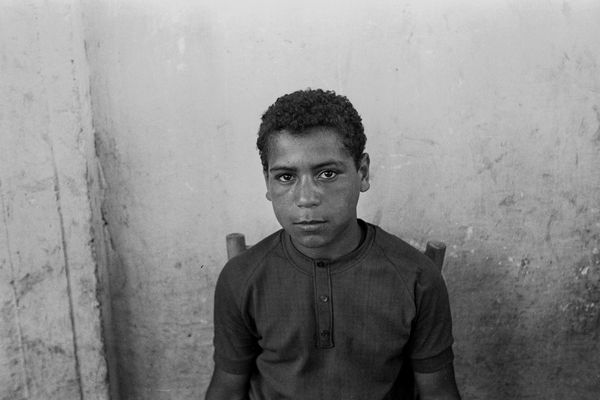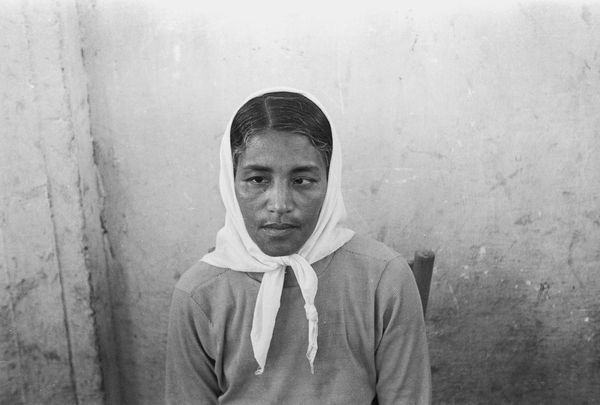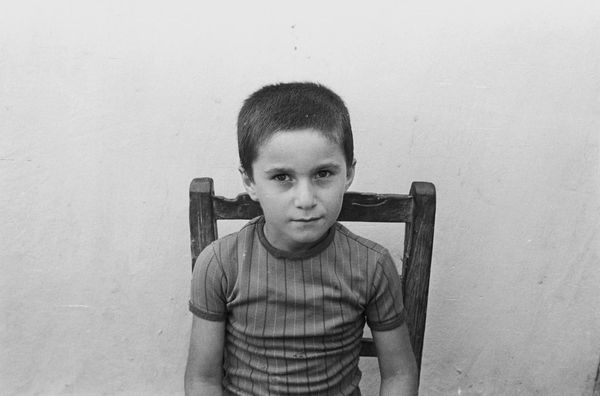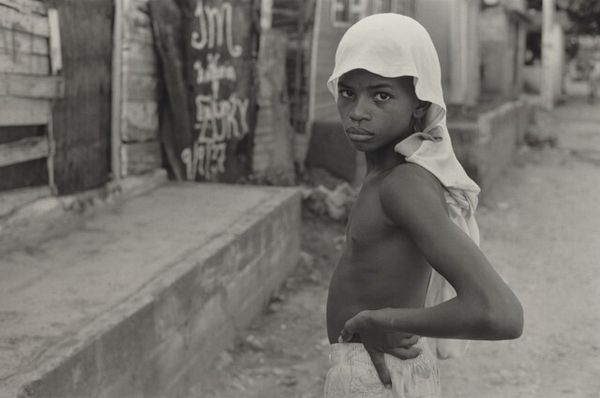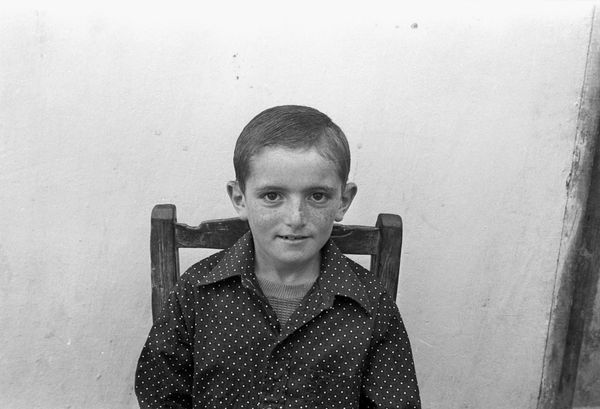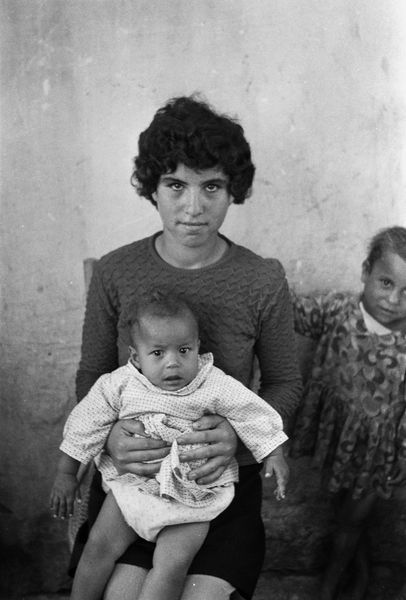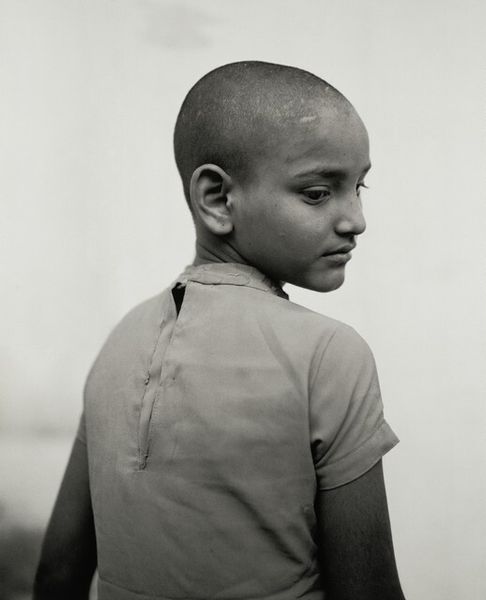
Dimensions: image: 191 x 289 mm
Copyright: © Akram Zaatari, courtesy Hashem el Madani and Arab Image Foundation, Beirut | CC-BY-NC-ND 4.0 DEED, Photo: Tate
Editor: Here we have Akram Zaatari’s photograph of a young girl in the 1960s, taken in an UNRWA school in South Lebanon. The bare setting and the girl's serious expression create a striking image. What do you see in this piece? Curator: As a materialist, I'm drawn to the social and economic context of this image. What kind of labor produced her dress? Consider the school's resources, or lack thereof, and how these material conditions shape the girl’s experience and this representation. The availability of photography itself is part of this. Editor: That’s a great point! Thinking about the labor involved and the school's limitations shifts my understanding entirely. Curator: Indeed. By examining these tangible aspects, we uncover deeper narratives about production, access, and representation. Editor: I’ve certainly learned a new way to look at the photograph, thank you.
Comments
tate 6 months ago
⋮
http://www.tate.org.uk/art/artworks/zaatari-anonymous-unrwa-school-south-lebanon-1960s-hashem-el-madani-p79411
Join the conversation
Join millions of artists and users on Artera today and experience the ultimate creative platform.
tate 6 months ago
⋮
This work is one of a series of black and white silver gelatin photographs of varying sizes that are collectively titled Objects of study/The archive of studio Shehrazade/Hashem el Madani/Studio Practices. All of the photographs were taken by the Lebanese commercial photographer Hashem el Madani between 1948 and 1982 and compiled into the present group, 117 of which are in Tate’s collection, by the Lebanese artist Akram Zaatari. All of the photographs include people, either alone, in pairs or in small groups, and most were taken in Madani’s studio, although some were shot outside and in his subjects’ homes. The series features men and women and covers a wide age range from babies to elderly people. Almost all of the sitters assume poses deliberately for the camera, sometimes accompanied by props or costumes, and most gaze directly towards the lens. Many of the pictures show subjects interacting in various ways, including embracing, kissing and acting out scenes, such as a mock wrestling match. The photographs are mostly tightly cropped, with the sitter or sitters filling most of the frame, although in some cases the figures are positioned further away from the camera, for instance when shown sitting at a table or standing behind a chair. The photographs tend to have sparse backgrounds, often dominated by a blank posterior wall. They are mounted on white paper, displayed in plain white frames and signed on the back by Madani. Many of them have been organised into categories by Zaatari – such as a group featuring men dressed as Syrian resistance fighters and a collection depicting newly married couples – while the rest are presented individually. Zaatari has stated that although he prefers these groups to be displayed together, this is not a requirement (Akram Zaatari, email to Rachel Taylor, 24 April 2008, Tate Acquisition file).
